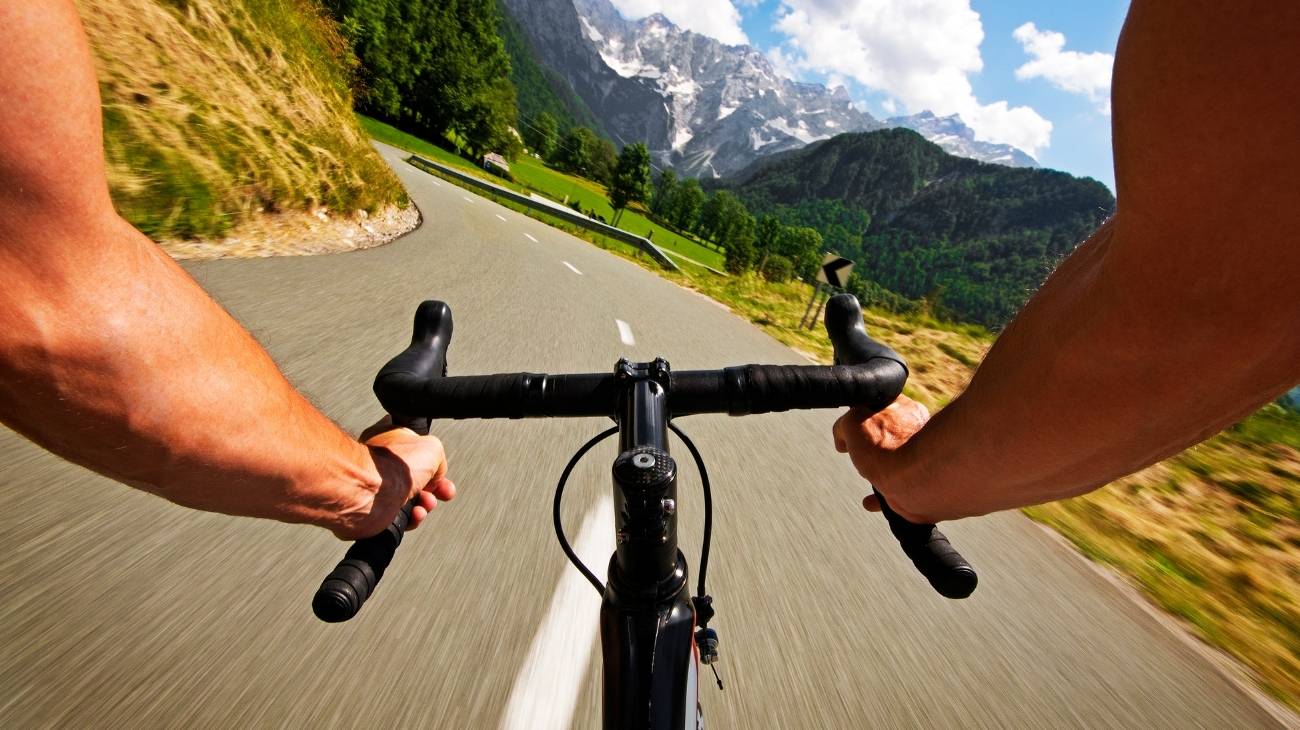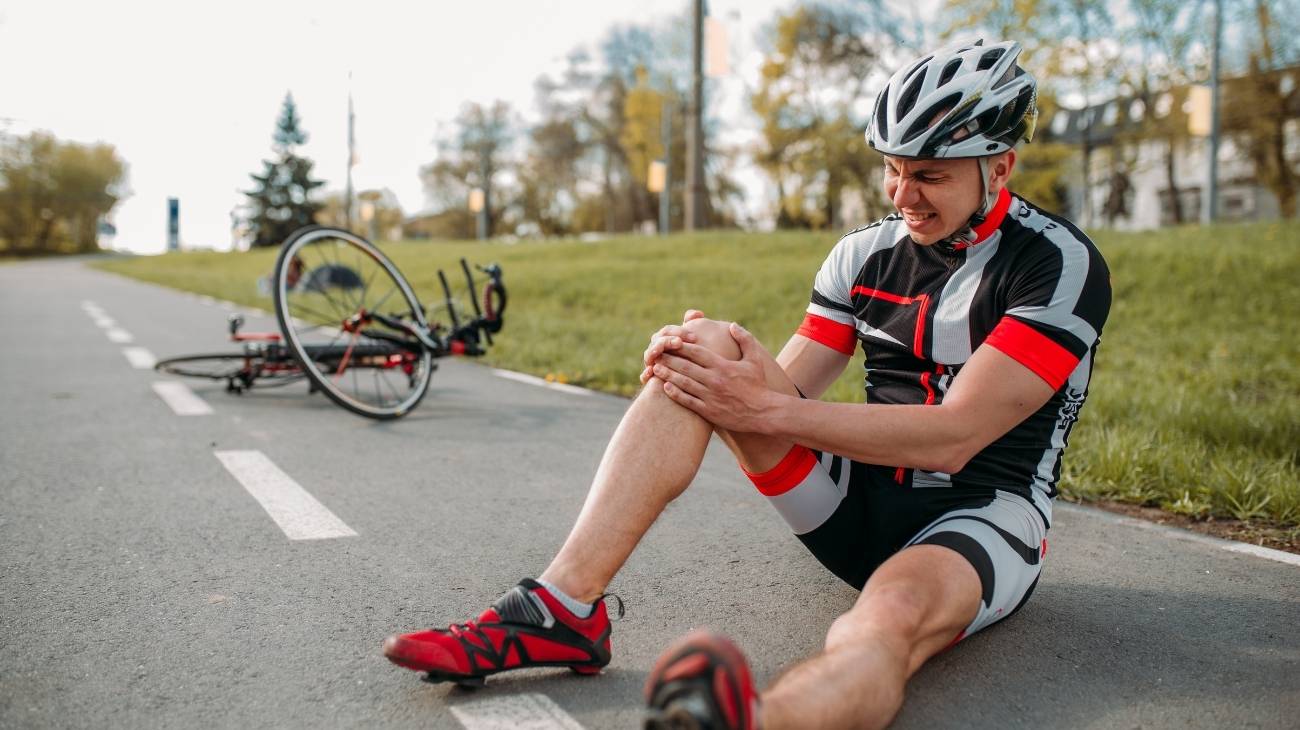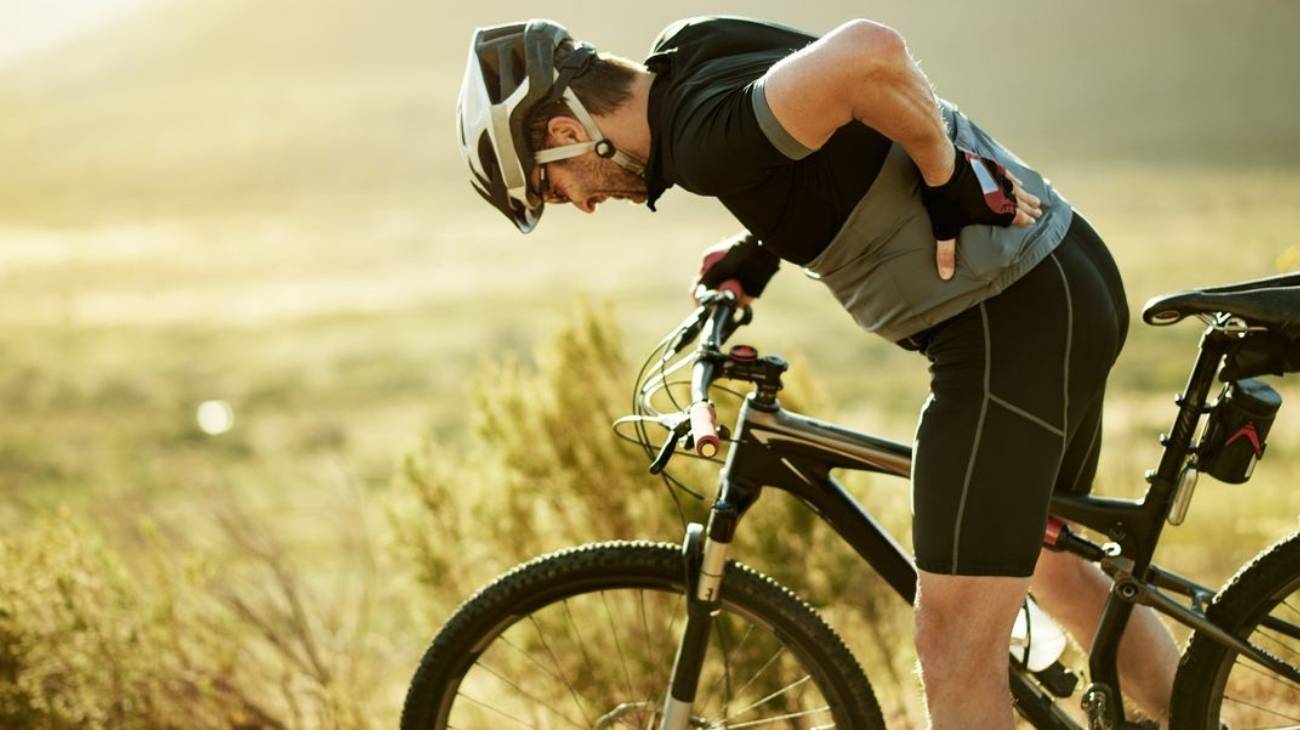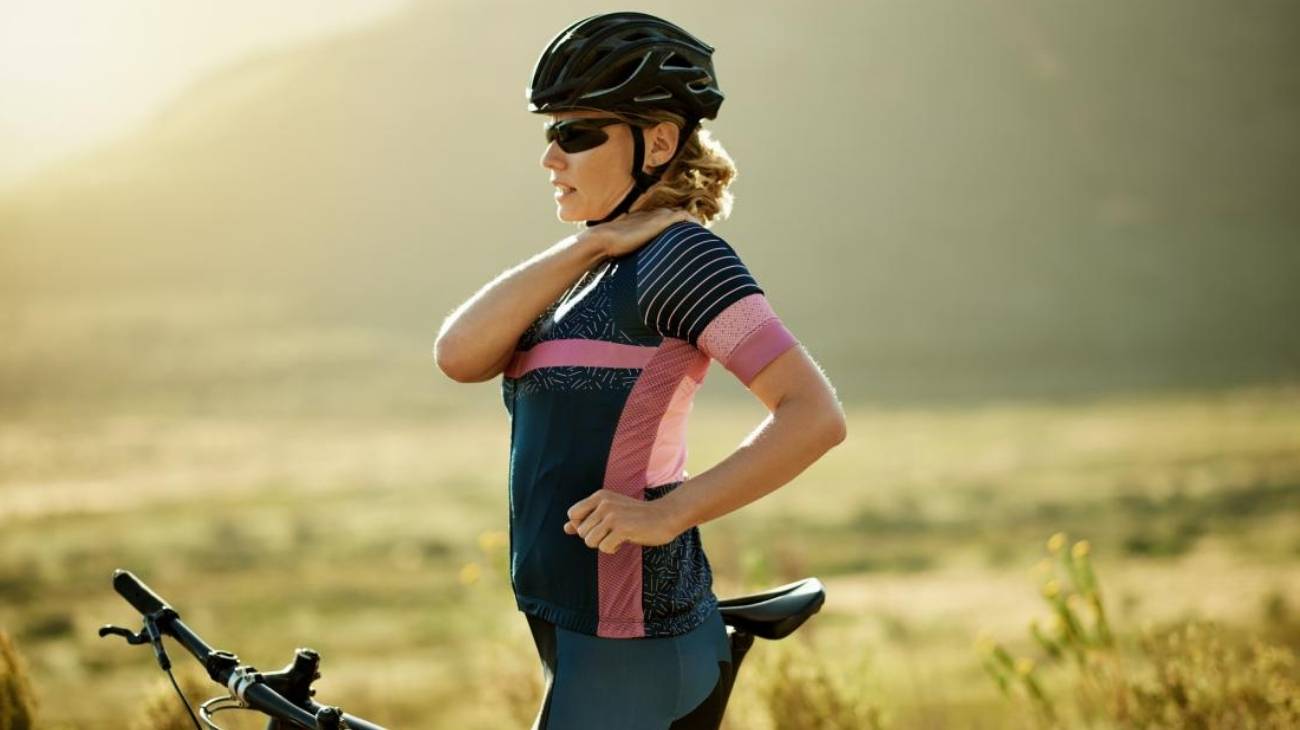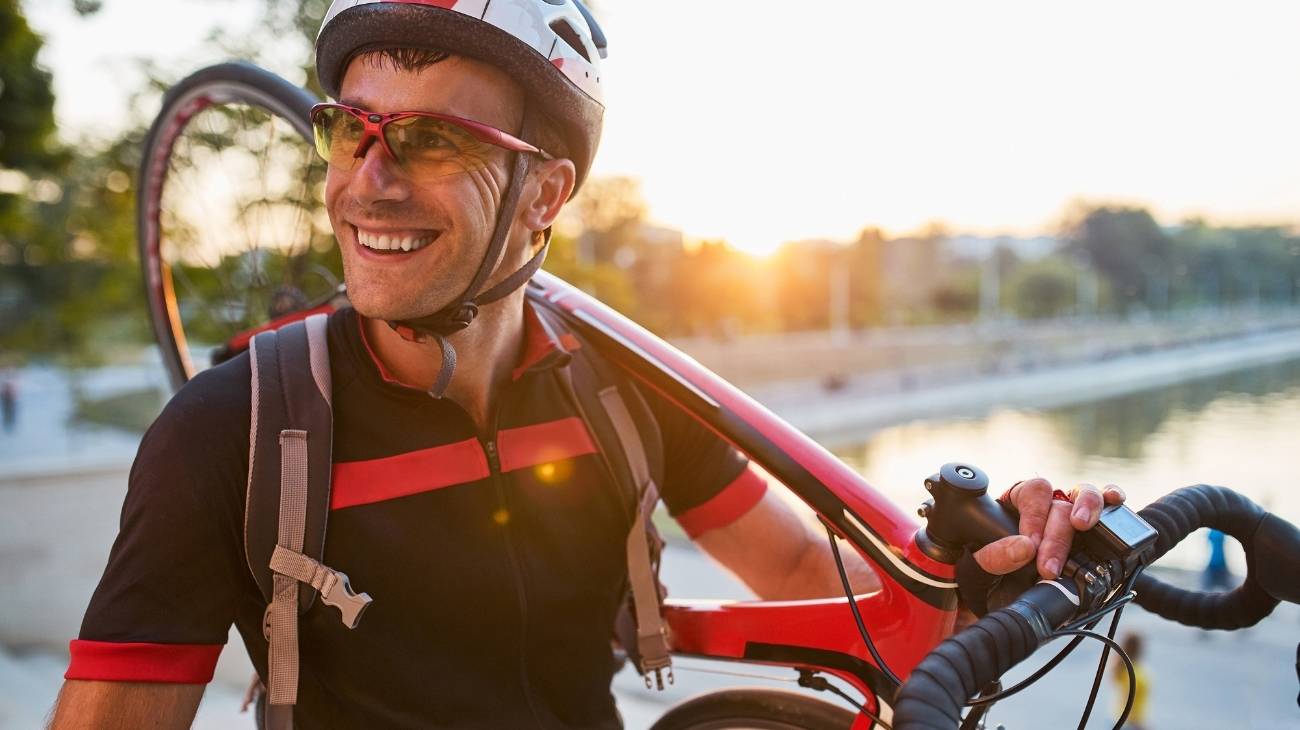Although pain and injuries in the legs and back are more common in cycling, as a good lover of this sport you must pay attention to the upper extremities or you may seriously injure yourself.
In this article we will discuss the most common types of sports injuries to wrists, hands and shoulders, so you will know how to train properly with these areas of the body in mind. We will explain how to apply the PRICE therapy and which products are the most efficient on the market when you need a quick recovery.
What are the most common types of shoulder and wrist injuries and pain in cyclists?
Unlike other sports, in cycling there is an 80% chance of avoiding injury through proper training. Unless you fall and injure yourself, your body will always warn you when something is wrong with you. This time we're focusing on the shoulders and wrists, so take a closer look at this list of the most common cycling injuries and discomforts in the upper limbs.
Pinched nerves
As nerves are distributed throughout our body, this sensation can occur wherever there is enough pressure exerted for the nerve to react with mild and then stronger, recurring twinges. Inflammation may press on the nerve with bones, cartilage, muscles and even tendons. The pain may even spread and no longer be localised, such as a pain that starts in the shoulder and sits all the way down the arm.
Shoulder pain is common because the joint accumulates a lot of stress after a long bike ride, but it's not something that will keep you out of action for long. Rest and physiotherapy are enough to recover.
Trapezius pain
It is recurrent in mountain biking, where you carry weight on your back and this is added to the effort of climbing, descending, walking with the bike on your shoulder and receiving the impact of the uneven terrain. You feel a heaviness in your shoulder, as if you are carrying dead weight on your back. This is an ailment present in one or both shoulders.
The trapezius is one of the widest muscles in the back and is located in the most superficial layer of the musculature, which is why the pain from an injury spreads throughout most of the upper back. In road and track cycling, it is not the effort that generates the discomfort, it is the overload of the body on the hands, so in this case it is important to change position when the muscle discomfort starts.
Adhesive capsulitis
Better known as "frozen shoulder", the humerus fits in a cavity wrapped in connective tissue called the shoulder capsule and is surrounded by a joint. A synovial fluid facilitates movement of the shoulder and because it is a very complex area, it is susceptible to inflammation leading to pain and stiffness throughout the shoulder.
It is common in people in their 50s and 60s, but in cyclists it is activated at a younger age, depending on how well prepared the athlete is to withstand the demands of cycling. When the stiffness is too much, with the help of physiotherapy there can be a complete recovery for six months or a year.
Carpal Tunnel Syndrome
This is a compression of the median nerve as it passes through the carpal tunnel at the wrist. This is an injury of dentists, editors and also cyclists. The nerve is crucial because it gives sensitivity and precision to the hand, through its connection with the thumb, index and middle finger.
It first manifests itself as tingling, then as intense pain, making it difficult even to close the hand to grasp the handlebars. If it is not treated with physiotherapy in time, an operating theatre is the only way to correct this problem. What is recommended? Do not tighten the handlebars so much and change your position. In the sections where you feel more relaxed, you can give mobility to your fingers and release the tension.
Flexor tendonitis
Its origin is the repetitive use of the hands when holding the handlebars in the same position. It starts with a thickening and nesting in the tendons, and then pain is triggered, forcing you to go to physiotherapy. When the nesting is in the first tense ring pulley, it stiffens the extension and gentle flexion of the fingers. Once the tendons are inflamed, the discomfort is felt throughout the hand and sometimes in the forearm.
Epicondylitis
The lateral region of the elbow is also injured. Remember that the arms support a large amount of body weight and must provide balance and direction. Overtraining causes wear and tear on the elbow that leads to this discomfort. In mountain biking, it is caused by falls on uneven terrain. It is natural for people to try to stop the blow with their hand and arm.
Best products for recovery from shoulder and wrist injuries in cycling
Bestseller
-
Acupressure Mat and Pillow (Black/Gray)
£44,95 -
Acupressure Mat and Pillow (Green/Navy)
£44,95 -
Acupressure Mat and Pillow (Pink/Bordeaux)
£44,95 -
Acupressure Pillow (Black/Gray)
£21,52 -
Acupressure Pillow (Green/Navy)
£21,52 -
Acupressure Pillow (Pink/Bordeaux)
£21,52 -
Ice Massage Roller Ball (Black)
£34,95 -
Ice Massage Roller Ball (Green)
£34,95 -
Ice Massage Roller Ball (Pink)
£34,95 -
Microwave Wheat Bag for Neck & Shoulder Pain Relief (Hearts)
£21,50 -
Microwave Wheat Bag for Neck & Shoulder Pain Relief (Oxford)
£21,50 -
Microwave Wheat Bag for Neck & Shoulder Pain Relief (Sport)
£21,50 -
Microwave Wheat Bag for Neck Pain Relief (Hearts)
£17,50 -
Microwave Wheat Bag for Neck Pain Relief (Oxford)
£17,50 -
Microwave Wheat Bag for Neck Pain Relief (Sport)
£17,50 -
Microwaveable Wheat Bag for Pain Relief (Hearts)
£17,50 -
Microwaveable Wheat Bag for Pain Relief (Oxford)
£17,50 -
Microwaveable Wheat Bag for Pain Relief (Sport)
£17,50 -
Shoulder Support Brace (Black)
£21,95 -
Shoulder Support Brace (Green)
£21,95 -
Shoulder Support Brace (Pink)
£21,95 -
Trigger Point Massage Stick (Black)
£12,95 -
Trigger Point Massage Stick (Green)
£12,95 -
Trigger Point Massage Stick (Pink)
£12,95
How to apply the RICE therapy to treat shoulder and wrist injuries in cycling?
To learn more about its history, physician and former athlete Gabe Mirkin first mentioned the RICE therapy in 1978. It has since been updated and is now known as PRICE. It is a set of steps to follow for a soft tissue injury. You need to know all the steps to know how to deal with an injury in training and competition.
- Protection: Is to reduce the risk of the injury becoming complicated. When what is visible to the naked eye is a cause for alarm, bandages or splints are used. What we want is to avoid other injuries associated with the first ailment.
- Rest: This means avoiding the use of the injured shoulder or arm. Sometimes mild exercises and support from someone else are required to know exactly what the injury is. Rest is relative because only your doctor will tell you when to give your joints mobility.
- Ice: Cold works great when you want the pain to subside, as well as the swelling in the affected area. Ice should not be applied directly to the skin because it can burn it. You should apply it for a few minutes to the swollen side of the shoulder and then remove it to avoid burning.
- Compression: Wrap the shoulder with an elastic bandage. However, an ordinary bandage will also work. The aim of compression is to reduce the blood flow to the injury, which will reinforce the effect of the ice.
- Elevation: Of course, the shoulder already fulfils this step, as it involves raising the joint above the level of the heart.
References
- Kennedy, J. (2009). Neurologic injuries in cycling and bike riding. Physical medicine and rehabilitation clinics of North America, 20(1), 241-248. https://www.sciencedirect.com/science/article/abs/pii/S1047965108000946
- Rettig, A. C. (2003). Athletic injuries of the wrist and hand. The American journal of sports medicine, 31(6), 1038-1048. https://journals.sagepub.com/doi/abs/10.1177/03635465030310060801
- Schorn, D., Vogler, T., Gosheger, G., Schneider, K., Klingebiel, S., Rickert, C., ... & Liem, D. (2018). Risk factors for acute injuries and overuse syndromes of the shoulder in amateur triathletes-A retrospective analysis. Plos one, 13(6), e0198168. https://journals.plos.org/plosone/article?id=10.1371/journal.pone.0198168
- Voight, M. L., & Thomson, B. C. (2000). The role of the scapula in the rehabilitation of shoulder injuries. Journal of athletic training, 35(3), 364. https://www.ncbi.nlm.nih.gov/pmc/articles/PMC1323398/
- Burkhart, S. S., Morgan, C. D., & Kibler, W. B. (2000). Shoulder injuries in overhead athletes: the “dead arm” revisited. Clinics in sports medicine, 19(1), 125-158. https://www.sciencedirect.com/science/article/abs/pii/S0278591905703008
- Cohen, G. C. (1993). Cycling injuries. Canadian Family Physician, 39, 628. https://www.ncbi.nlm.nih.gov/pmc/articles/PMC2379777/
- Wanich, T., Hodgkins, C., Columbier, J. A., Muraski, E., & Kennedy, J. G. (2007). Cycling injuries of the lower extremity. JAAOS-Journal of the American Academy of Orthopaedic Surgeons, 15(12), 748-756. https://journals.lww.com/jaaos/Abstract/2007/12000/Cycling_Injuries_of_the_Lower_Extremity.8.aspx
- Mellion, M. B. (1991). Common cycling injuries: management and prevention. Sports Medicine, 11, 52-70. https://link.springer.com/article/10.2165/00007256-199111010-00004
- Mulvaney, C. A., Smith, S., Watson, M. C., Parkin, J., Coupland, C., Miller, P., … & McClintock, H. (2015). Cycling infrastructure for reducing cycling injuries in cyclists. Cochrane database of systematic reviews, (12). https://www.cochranelibrary.com/cdsr/doi/10.1002/14651858.CD010415.pub2/full
- Sanner, W. H., & O’Halloran, W. D. (2000). The biomechanics, etiology, and treatment of cycling injuries. Journal of the American Podiatric Medical Association, 90(7), 354-376. https://japmaonline.org/view/journals/apms/90/7/87507315-90-7-354.xml







































